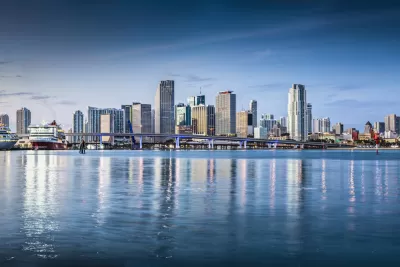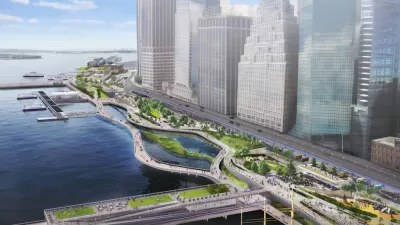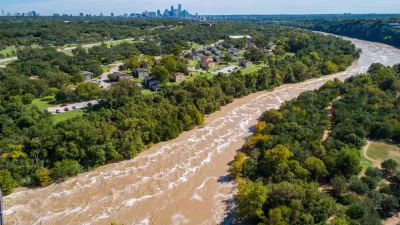The public sector and the private sector need a better system of incentives to deliver on the infrastructure and development investments necessary to prepare for climate change and other environmental threats.

"Many cities are turning to other partners to work on their resiliency efforts," according to an article by Jackie Snow. Other partners, that is, meaning the private sector.
However, much of the article focuses on the remaining disconnect between the public sector and the private sector on the work remaining to be done to build resilience—not just resilience plans. Ernst & Young and 100RC released a study called "How can cities build resilience thinking into their infrastructure projects?" for instance, "found that city governments think they understand the challenges of urban resilience better than they actually do, with only 30% of private sector agreeing that cities understand the work around urban resiliency."
The disconnect is perpetuated like challenges like term limits (politicians are interested in wins during their tenure, not in thinking on the timelines of climate change) and project budgets (private sector entities are afraid of overbidding on requests for proposals. In fact, the "study found that both the public and private sector agree there is insufficient incentives to incorporate resilience thinking into infrastructure," according to Snow.
FULL STORY: The role of P3s in resilience planning

Study: Maui’s Plan to Convert Vacation Rentals to Long-Term Housing Could Cause Nearly $1 Billion Economic Loss
The plan would reduce visitor accommodation by 25,% resulting in 1,900 jobs lost.

North Texas Transit Leaders Tout Benefits of TOD for Growing Region
At a summit focused on transit-oriented development, policymakers discussed how North Texas’ expanded light rail system can serve as a tool for economic growth.

Why Should We Subsidize Public Transportation?
Many public transit agencies face financial stress due to rising costs, declining fare revenue, and declining subsidies. Transit advocates must provide a strong business case for increasing public transit funding.

How to Make US Trains Faster
Changes to boarding platforms and a switch to electric trains could improve U.S. passenger rail service without the added cost of high-speed rail.

Columbia’s Revitalized ‘Loop’ Is a Hub for Local Entrepreneurs
A focus on small businesses is helping a commercial corridor in Columbia, Missouri thrive.

Invasive Insect Threatens Minnesota’s Ash Forests
The Emerald Ash Borer is a rapidly spreading invasive pest threatening Minnesota’s ash trees, and homeowners are encouraged to plant diverse replacement species, avoid moving ash firewood, and monitor for signs of infestation.
Urban Design for Planners 1: Software Tools
This six-course series explores essential urban design concepts using open source software and equips planners with the tools they need to participate fully in the urban design process.
Planning for Universal Design
Learn the tools for implementing Universal Design in planning regulations.
Ascent Environmental
Borough of Carlisle
Institute for Housing and Urban Development Studies (IHS)
City of Grandview
Harvard GSD Executive Education
Toledo-Lucas County Plan Commissions
Salt Lake City
NYU Wagner Graduate School of Public Service





























